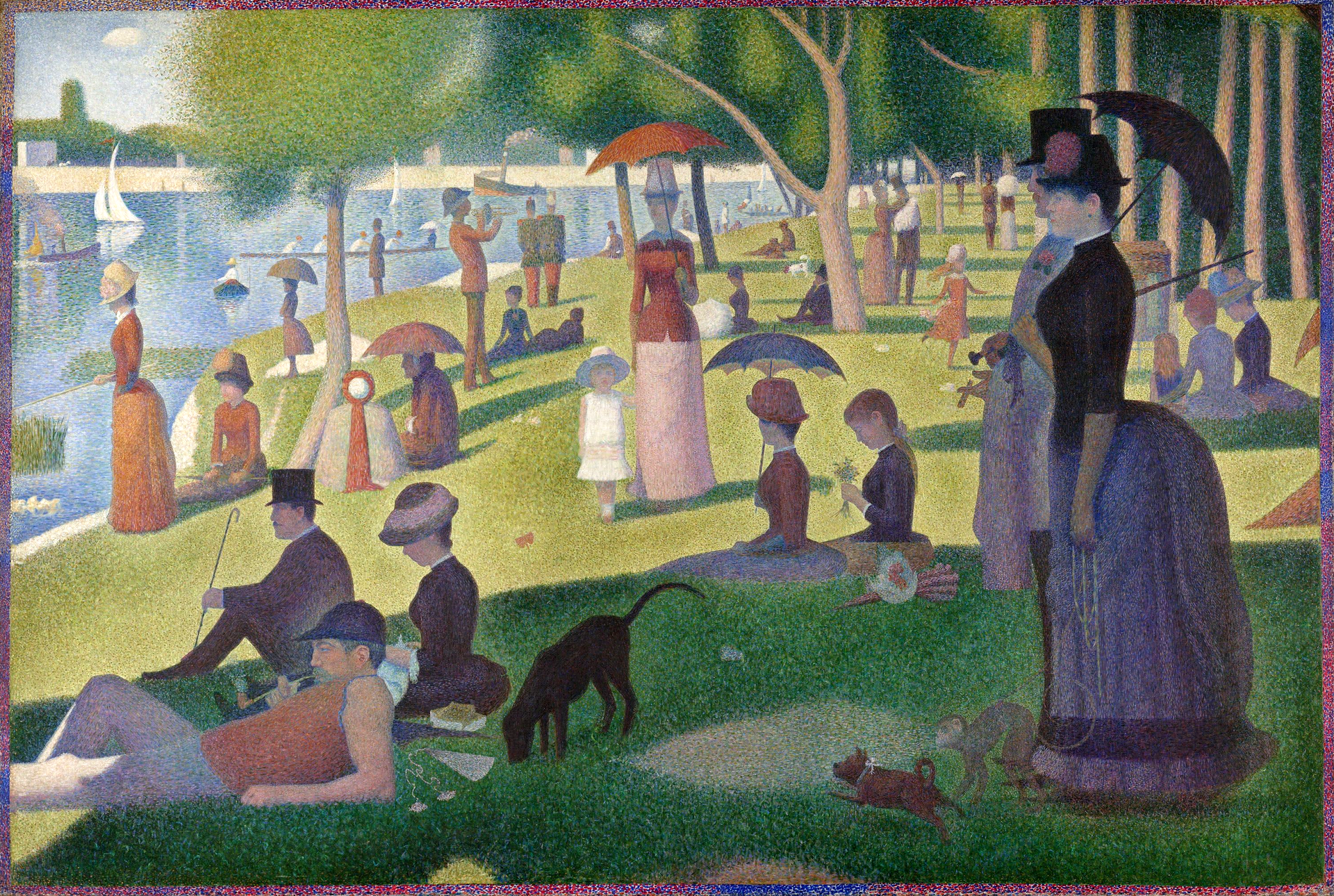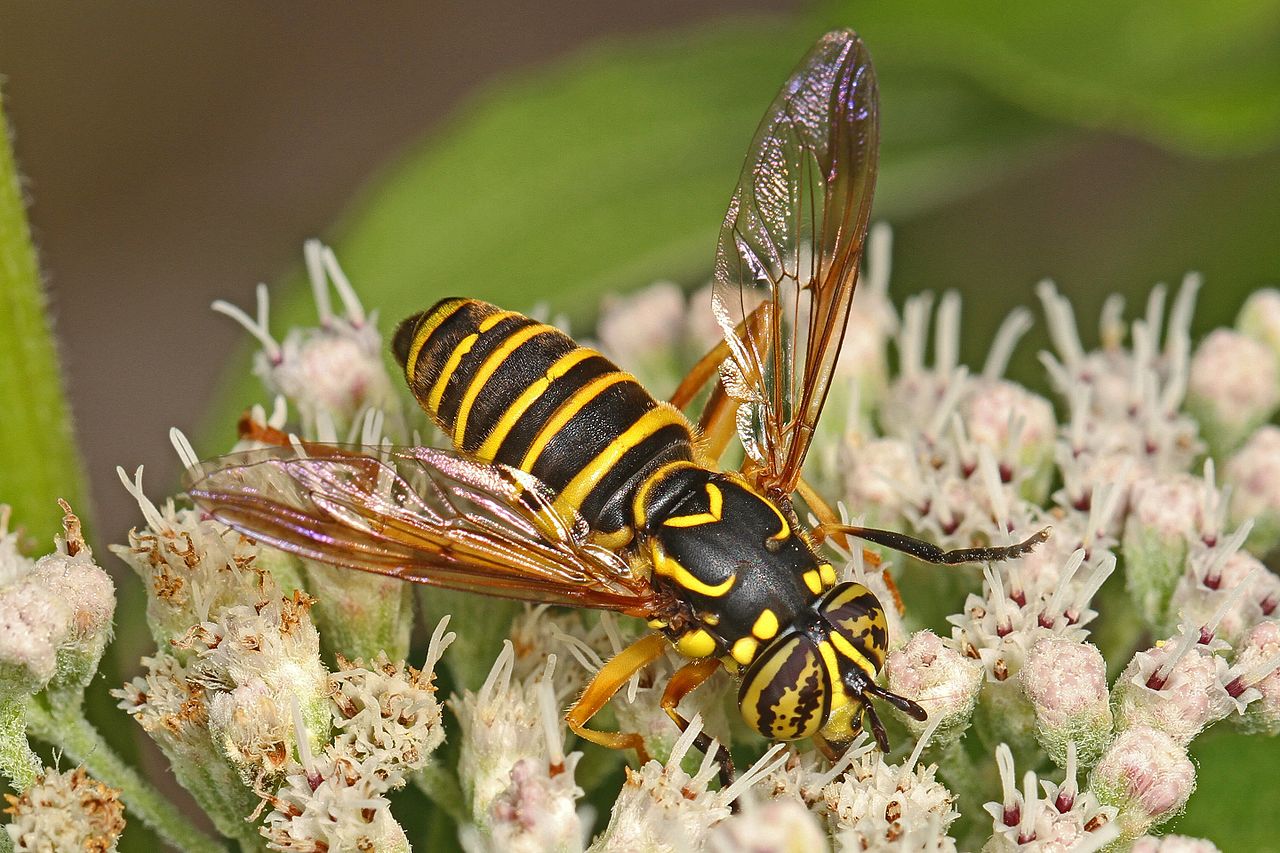Another fascinating example of structural coloration is the natural counterpart to the pointillism of Georges Seurat, the marble berry plant (Pollia condensata). Lacking any blue pigment, the marble berries still manage to have a blue color that is as dazzling as it is long lasting–a phenomenon going decades after the plant has died. The berries actually reflect 30 percent as much light as a silver mirror, a considerable amount that has given them the distinction of having the most intense blue known in nature. All this, again, created without the use of blue pigment.

The outermost layer of the marble berries is a glossy, smooth, and transparent cuticle which reflects some of the light (0.6%) in the same way that a mirror would (specular reflection). Next are three to four layers of thick walled cells with 5-nm wide spirally-shaped microfibrils made of transparent cellulose. This is the layer where the blue iridescence is formed.
Underneath this layer of cells with fibrils are actually two to three layers of cells with pigment, specifically dark tanins. These tanins act like the melanin does in the iridescent hummingbird feathers. They are a light sink, absorbing light that has penetrated that far, which helps gives purity to the wavelengths that had been reflected in the layers above. Below this tanin layer is a final layer of largely empty, thin-walled cells whose purpose is to scatter the remaining light.
All these layers are important in creating the vivid blue, but the microfibril layer is where it is created. Though clear, the spirals manage this feat through a constructive interference method called Bragg reflection. Bragg reflection is similar to the thin-film interference we saw in hummingbirds. Light reflects off the first layer of transparent microfibrils–typically peaking at blue wavelengths–but some light passes through to the next layer. Each layer reflects some portion of light back out. So while the first layer might peak at blue wavelengths, having multiple layers increases those peaks as the wavelengths combine and constructively interfere.

Perhaps the most famous of Seurat’s pointillist artwork.
Now, the cells are curved and ellipsoidal, so looking directly on, there is a bright stripe of color down the center of each cell. The color is dictated by the thickness of this layer of cells, the length of the spirals. Each cell may have a different color from its neighbor, and while blue is clearly the dominant one, red and green also make plenty of appearances, creating the unique pointillist effect. Similar to adjusting the viewing angle on feathers of hummingbirds creates iridescence, the constructive interference of the Bragg effect as well as the curvature of the surface creates iridescence as you view the surface of the berries at different angles.
So while there is no blue pigment in the berry, they are, in fact, a striking blue. Currently the reasons for the blue coloration is not known, but the fruit themselves are lacking in nutrition, so it is likely to attract birds for dispersal. Either the bright blue color is favored by birds for mating displays (such as bower birds in Australia), or more likely, the fruit imitates nutritious species and tricks the birds into eating it.

Now you may wonder why we don’t have loads of examples of this behavior. After all, the marble berry plant has a large advantage over other plants in that it does not have to produce the nutrient-heavy fleshy fruit. Well, there may be many examples we do not yet know. Scientists are always making new fascinating discoveries. The other reason is that mimicry only works so often. If enough plants mimic blue to trick birds into eating their fruit, then the birds will catch on. Mimicry only works if the dominant form is the real one and not the mimic. So there you have it, structural coloration that is the brightest blue, iridescent, and probably a mimic while also creating a very unique pointillist effect.
We can appreciate the beauty of this in nature and marvel at the creation of it, but the story does not have to end there. Normal plant pigments fade, but these berries still retain much of their color for decades. This may have many practical applications in art, such as fabrics or paint-making. Maybe as our understanding of the natural world increases, we will end up producing long-lasting paints through significant structural coloration. A genius such as Rembrandt, who painted many layers of semi-clear colors, would likely have loved the multi-layer approach of the marble berry plant.
For the original research, go to the Proceedings of the National Academy of Sciences, https://www.pnas.org/content/109/39/15712
